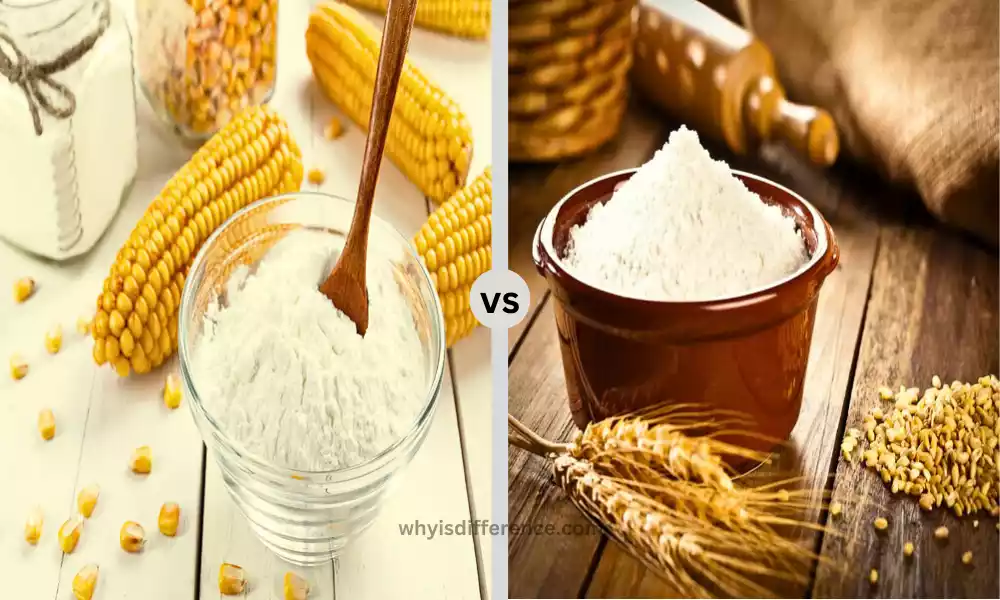When it comes to cooking and baking, two key ingredients that often find their way into our recipes are starch and flour. Although they may seem similar at first glance. These kitchen staples actually have distinct features and purposes. In this informative article, we will explore the difference between starch and flour. Let’s explore their unique features, uses, and benefits. Whether you are a seasoned chef or a novice cook. Understanding these differences can significantly improve your culinary creations.
Importance of Starch
Starch plays an important role in the culinary world due to its unique properties and versatile applications. One of its key contributions is its exceptional thickening ability. which transform thin liquids into rich, velvety sauces and soups. This thickening energy is used when starch grains absorb water and swell.
Creates a gel-like consistency that enhances the mouthfeel and visual appeal of foods. Starches are renowned for their ability to stabilize emulsions and prevent segregation in various sauces and dressings. Hence giving them a desirable consistency and appearance. Beyond its culinary applications, starch also finds its way into confectionery. Where it lends its magic to create a glossy finish to puddings and custards.
The importance of starch also extends to dietary choices, as it serves as an important ingredient in gluten-free cooking. which offers a safe thickening option for those with gluten sensitivity. So, starch stands as an essential tool for chefs, home cooks, and food enthusiasts. which shapes the texture and quality of a wide range of foods.
Importance of Flour
Flour plays an essential role in the world of culinary arts. which serves as the backbone of countless recipes. and provides the basic structure for baked goods. Its significance lies in its versatile nature. which offers a canvas on which culinary creations are created. With its variety—from all-purpose to specialty flours such as whole wheat, bread, and cake flour—it accommodates a spectrum of textures and flavors in baked goods.
The protein content of flour, especially wheat-based varieties, facilitates gluten formation. So is a protein network that is important for providing elasticity and structure to bread and other baked items. This unique ability to trap gases produced by yeast, such as yeast or baking powder, results in an airy rise and tender crumb. That defines well-made pastries and breads.
The versatility of flour extends beyond baking, as it is a reliable ingredient for coating when frying. and serves as a thickening base for sauces and gravies in cooking. The significance of Maida reaches deep into cultural heritage. which each culture exhibits its distinctive uses and recipes. reinforcing its position as a culinary staple. which has stood the test of time.
What is Starch?
Starch is a complex carbohydrate that serves as an essential energy storage molecule in plants. Composed of chains of glucose molecules, starch granules are abundantly present in various parts of plants, such as grains, tubers, and seeds. Starch acts as the primary energy source of plants. which provides the necessary fuel for growth and development.
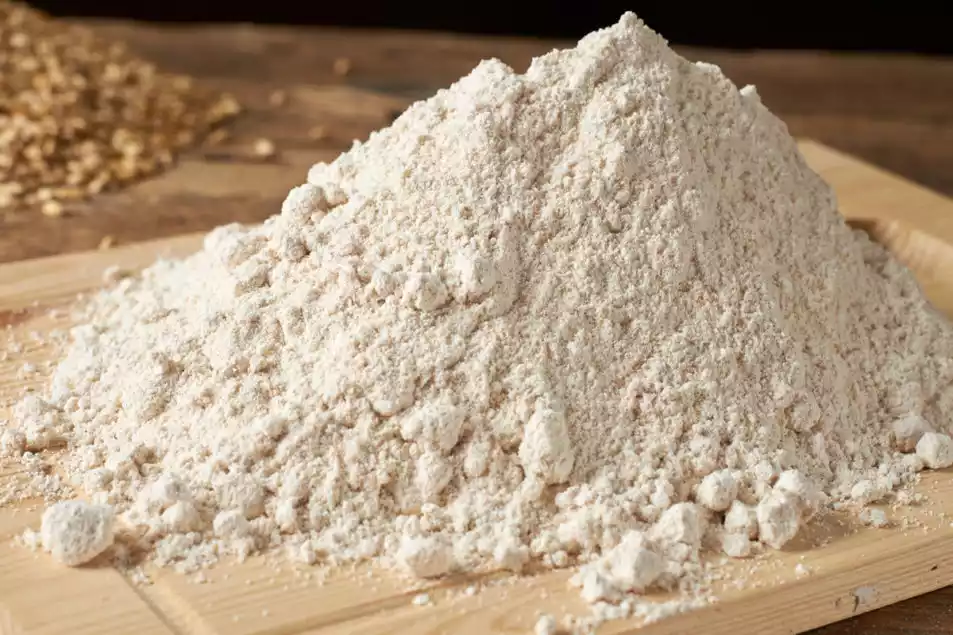
Starch plays an important role as a thickening agent due to its ability to absorb water and form a gel-like consistency. This property is used to enhance the texture, viscosity, and overall appeal of sauces, soups, and other dishes. Starch also finds its place in confectionery and baking production. which contributes to the glossy finish of desserts and aids in gluten-free recipes as an alternative to gluten-based thickeners.
Tapioca of starch
Tapioca starch, also known as tapioca flour. A type of starch obtained from cassava root (Manihot esculenta). Cassava is a tropical plant in South America and is a staple food in many regions. Tapioca starch is obtained through the process of extracting, washing, and then drying cassava roots.
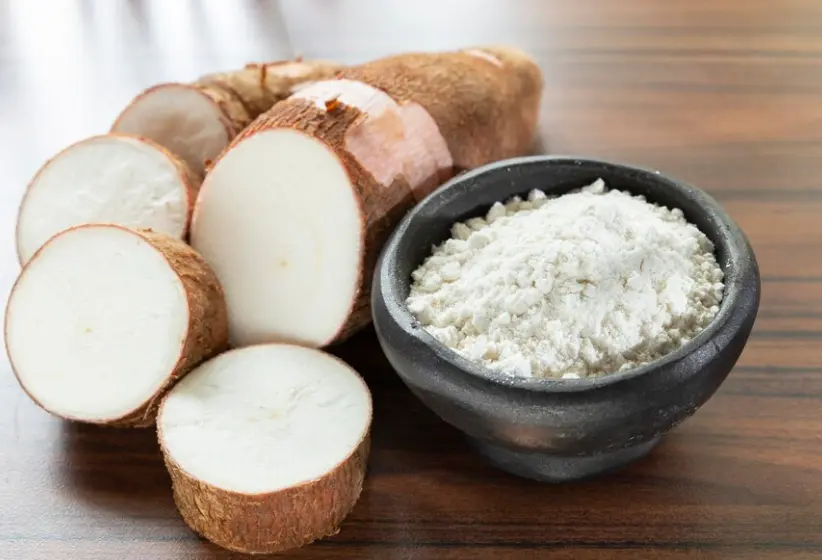
Characteristics and Uses:
- Texture and Appearance: Tapioca starch is a fine, white powder that is neutral in flavor. It has a soft and powdery texture, making it easy to work with in various culinary applications.
- Thickening Agent: Tapioca starch is prized for its excellent thickening properties. When mixed with liquid and heated, the starch granules absorb the liquid and swell, forming a gel-like consistency. This makes it an ideal choice for thickening soups, sauces, and fillings. One distinctive feature of tapioca starch is that it creates a glossy and transparent finish, adding visual appeal to dishes.
- Gluten-Free Option: Tapioca starch is naturally gluten-free, making it a valuable ingredient for those with gluten sensitivities or celiac disease. It is commonly used in gluten-free baking and cooking to provide structure and texture in the absence of wheat flour.
- Versatility: Tapioca starch is versatile and can be used in both sweet and savory recipes. It is a popular ingredient in various cuisines around the world, especially in Asian and South American dishes.
- Puddings and Desserts: Tapioca pearls, which are larger granules of tapioca starch, are used to create tapioca pudding. The pearls absorb liquid and become translucent when cooked, resulting in a unique and delightful dessert.
- Boba or Bubble Tea: Tapioca pearls are also a key component in boba or bubble tea, a popular beverage that features tapioca pearls at the bottom of the glass, giving the drink its distinctive appearance and chewy texture.
- Frying and Coating: Tapioca starch can be used as a coating for frying foods, providing a crisp and golden exterior.
- Soup Thickeners: Tapioca starch can be used to thicken soups, creating a smooth and velvety texture.
So, tapioca starch is a versatile ingredient with excellent thickening properties. Known for its ability to create a glossy finish on various dishes. It is widely used in both traditional and modern culinary applications, from sauces and soups to puddings and boba tea. Its gluten-free nature and unique properties make it an essential ingredient in the kitchen of those looking for varied and interesting food creations.
What is Flour?
Flour is a fine powder obtained from various sources such as grains, nuts, or seeds, and serves as a basic ingredient in cooking and baking. The most common type of flour is wheat flour, which is produced by milling wheat kernels. And it contains proteins, carbohydrates, fats, vitamins, and minerals. Depending on the type of flour, the protein content may vary.
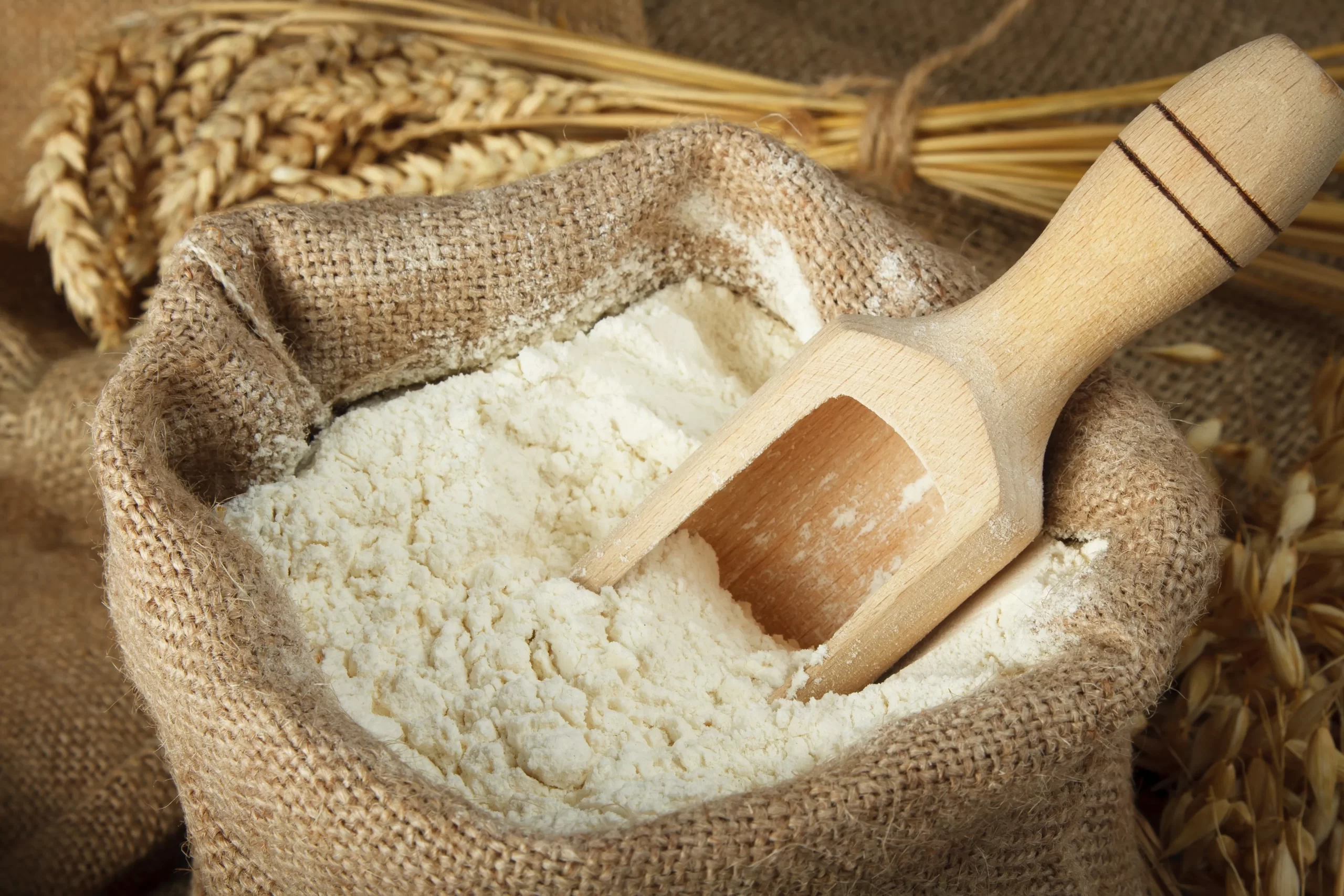
That high protein content contributes to the formation of gluten – a protein network critical to the structure and texture of baked goods. Flour is the backbone of baking. which provides the necessary structure and texture to recipes ranging from breads and pastries to cakes and cookies. It is the main ingredient in coatings for fries and also acts as a thickening agent in sauces and gravies. A wide range of flours are available, each with distinct properties and uses, highlighting the integral role that flour plays in the culinary world.
Whole wheat flour
Whole wheat flour is a type of flour made from whole wheat kernels. Which includes bran, germ, and endosperm. which goes through processing that removes bran and germs. Whole wheat flour retains these nutrients. It makes a healthier and more healthy choice.
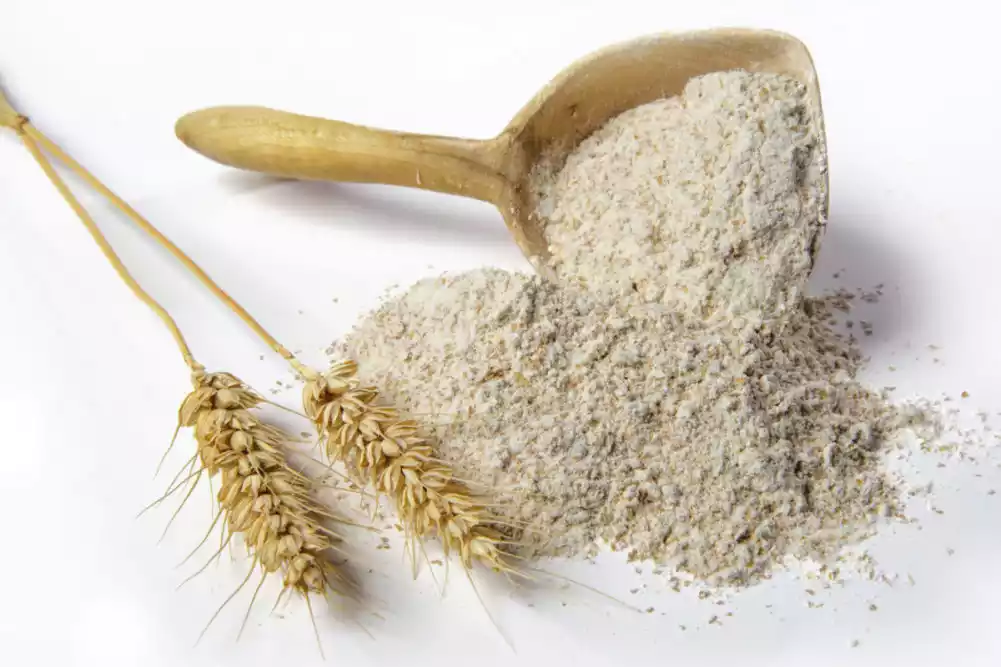
Characteristics and Uses:
- Nutrient-Rich: Whole wheat flour is nutritionally dense due to its retention of the bran and germ. These components contain dietary fiber, vitamins, minerals, and healthy fats. This makes whole wheat flour a more nutritious option compared to refined flour.
- Flavor Profile: Whole wheat flour has a nuttier and slightly earthier flavor compared to refined flour. This distinct taste adds depth to baked goods.
- Fiber Content: The bran in whole wheat flour contains dietary fiber, which aids in digestion and contributes to a feeling of fullness. This can be beneficial for maintaining a balanced diet.
- Texture: Whole wheat flour has a coarser texture due to the presence of bran particles. This texture can affect the final outcome of baked goods, resulting in a heartier and denser product.
- Baking: Whole wheat flour is commonly used in baking recipes that benefit from its nutty flavor and increased nutritional value. It’s suitable for bread, muffins, pancakes, cookies, and other baked goods.
- Mixing with Other Flours: Whole wheat flour can be used in combination with other flours, like all-purpose flour, to balance the texture and taste. This approach can help maintain the health benefits of whole wheat while achieving the desired consistency.
- Storage: Due to its higher fat content from the germ, whole wheat flour has a shorter shelf life than refined flour. Storing it in an airtight container in a cool, dark place or in the refrigerator can help preserve its freshness.
- Adapting Recipes: When using whole wheat flour in place of refined flour, recipes might require some adjustments. Whole wheat flour absorbs more liquid, so increasing the liquid content slightly may be necessary.
So, whole wheat flour is a nutritious alternative to refined flour. which provides health benefits and a distinct taste. Its inclusion in a variety of recipes adds both texture and nutrition. This makes it a valuable ingredient for those looking to increase the nutritional value of their baked goods and other foods.
Difference Between Starch and Flour
Here’s a simplified comparison chart highlighting the key differences between starch and flour:
| Aspect | Starch | Flour |
|---|---|---|
| Definition | Complex carbohydrates made of glucose molecules | Finely ground powder from grains, nuts, seeds |
| Types | Cornstarch, potato starch, tapioca starch, etc. | All-purpose, whole wheat, bread, cake, etc. |
| Composition | Primarily carbohydrates, minimal proteins | Carbohydrates, proteins, fats, vitamins, minerals |
| Functionality | Thickening sauces, gravies, glossy finishes | Structure and texture in baking, coatings, |
| Thickening Ability | Excellent for thickening sauces, soups, and gravies | Used in baking for structure and texture |
| Gluten Content | No gluten-forming proteins | Contains proteins, some types of gluten |
| Culinary Applications | Thickening, glossy finishes in desserts | Baking bread, cakes, pastries, coatings, |
| Gluten Presence | Lacks proteins for gluten formation | Contains proteins for gluten development |
| Nutritional Content | Primarily carbohydrates, low in nutrients | Carbohydrates, proteins, fats, vitamins, |
| Culinary Uses | Thickening agent, glossy finishes in desserts, gluten-free cooking | Baking, frying coatings, thickening agent |
| Usage in Baking | Limited role in baking, not for structure | Essential for structure, and texture in baked goods |
| Applications | Widely used for sauces, soups, confectionery | Essential in baking, cooking, and frying |
| Texture in Cooking | Creates gel-like consistency | Depends on the type, used for thickening, coating |
| Importance | Vital for texture, viscosity, and structure in cooking | The backbone of baking provides structure to recipes |
| Dietary Considerations | Used in gluten-free cooking | Gluten-free options available |
Please note that this chart provides a simplified overview of the differences between starch and flour and may not encompass all aspects and nuances.
Gluten Content of Starch and Flour
Starch: Starch, regardless of its source (cornstarch, potato starch, tapioca starch, etc.), does not contain gluten. Gluten is a protein complex found primarily in wheat and related grains such as barley and rye. Starch is a carbohydrate composed of glucose molecules and is devoid of the proteins (gliadin and glutenin) that give rise to gluten formation. This lack of gluten makes starch a suitable option for individuals with gluten sensitivities, allergies, or celiac disease who need to avoid gluten-containing ingredients.
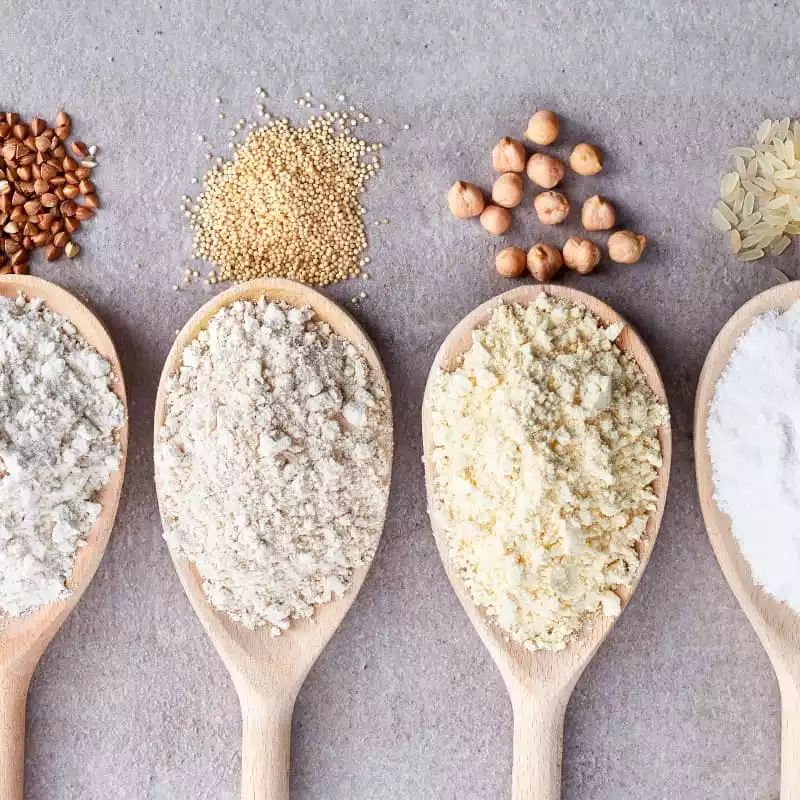
Flour: Flour, especially wheat flour, can contain varying levels of gluten depending on the type of flour and the source of wheat. Gluten forms when the proteins gliadin and glutenin interact with water during mixing and kneading. This interaction creates a network that provides structure and elasticity to baked goods.
Here’s how gluten content differs in various types of wheat flour:
- All-Purpose Flour: All-purpose flour typically contains moderate levels of gluten. It strikes a balance between protein content (for gluten formation) and versatility in baking.
- Bread Flour: Bread flour has a higher protein content than all-purpose flour, making it particularly suited for yeast-risen bread. The increased protein content contributes to stronger gluten development, resulting in a chewy texture.
- Cake Flour: Cake flour has a lower protein content, leading to less gluten formation. This results in delicate and tender baked goods, such as cakes and pastries.
- Whole Wheat Flour: Whole wheat flour contains gluten, but the presence of bran and germ can interfere with gluten development, resulting in a denser texture in baked goods.
It’s important to note that gluten content is specific to wheat-based flour and is not present in starches derived from non-gluten sources. For individuals with gluten sensitivities or celiac disease, it’s crucial to avoid flours that contain gluten and to choose gluten-free starches when appropriate.
Final Opinion
Understanding the important difference between starch and flour can significantly impact the success of your meal. Although starch excels in imparting viscosity and smoothness, the role of flour in structure and growth cannot be understated. Using the unique properties of each element.
You can elevate your cooking and baking efforts to new heights. Can create delectable masterpieces that delight the palate. So, you’re making a delicious sauce or a delicate pastry. Which is The choice between starch and flour is a fundamental decision that sets the stage for culinary greatness.

